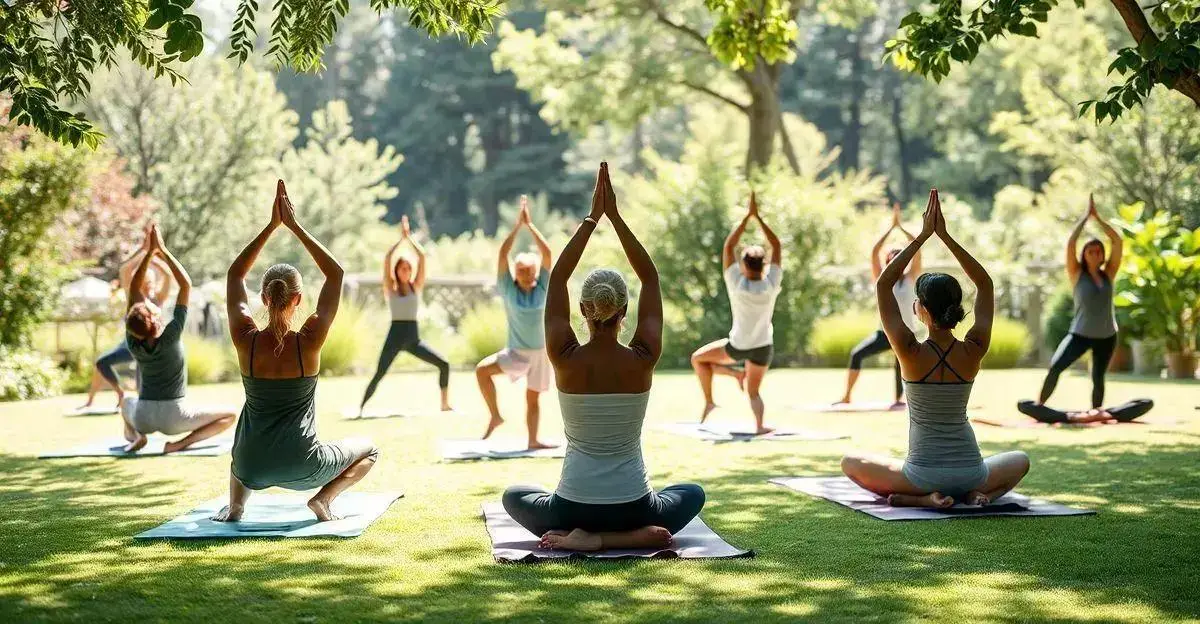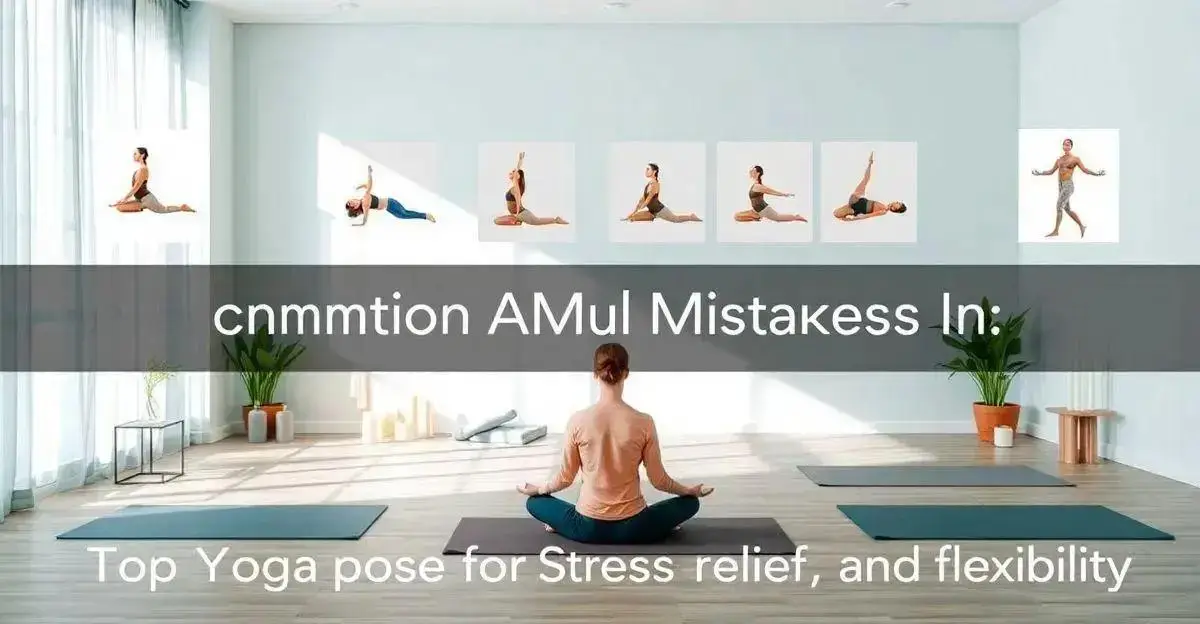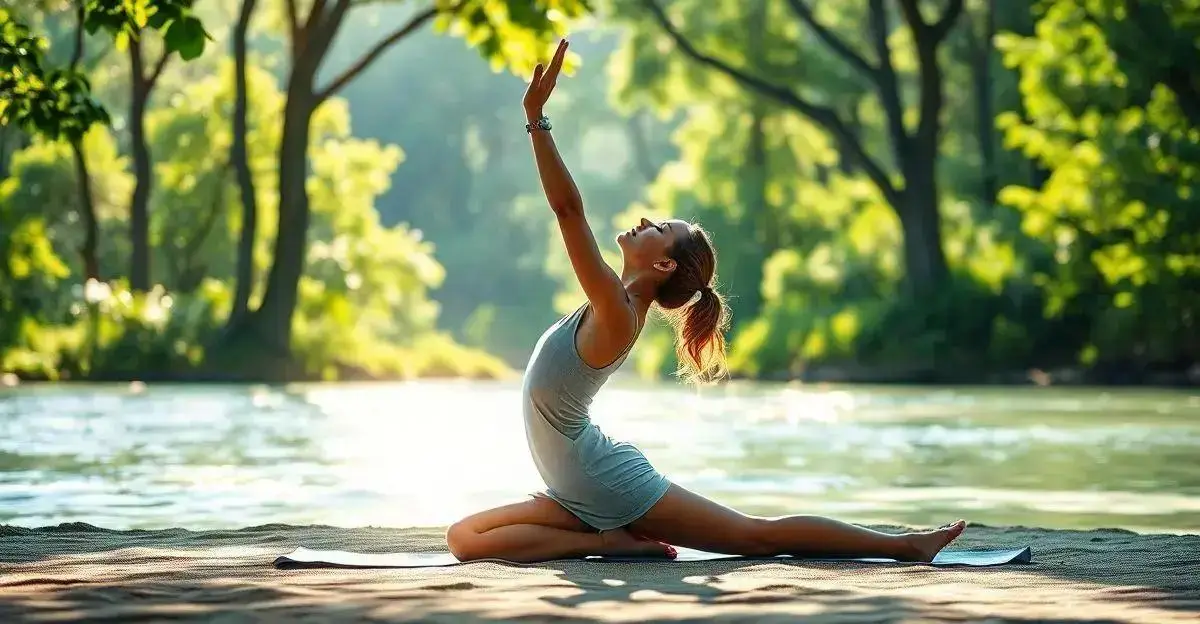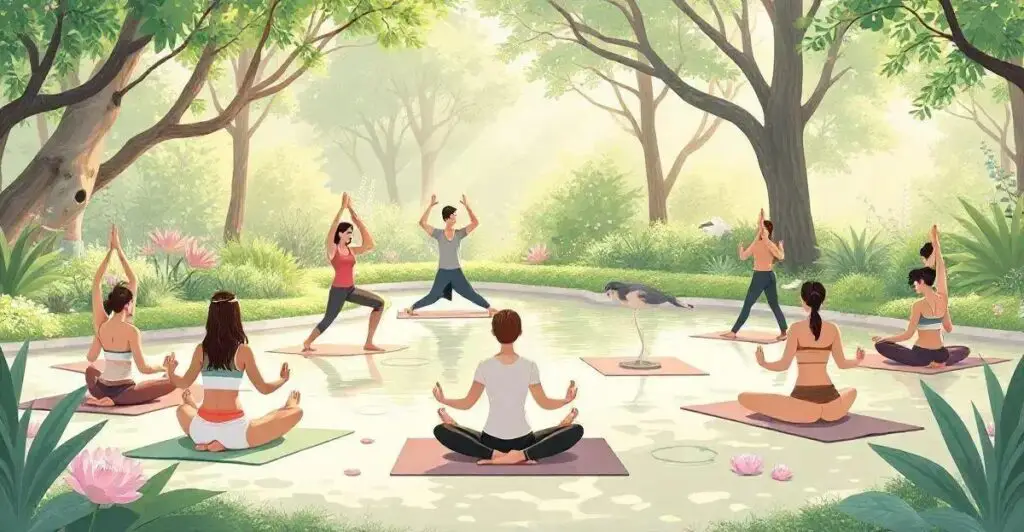Are you looking for a holistic approach to improve your physical and mental health? Look no further than yoga.
This ancient practice has been shown to reduce stress, increase flexibility, and boost mood.
By combining physical movement with mindfulness, yoga can help you unlock your inner strength and achieve a sense of inner peace.
In this post, we’ll explore the benefits of yoga, the science behind its effects, and provide tips for getting started and avoiding common mistakes.
Table of Contents
Benefits of Yoga
Yoga has numerous benefits for the body, mind, and spirit. Regular practice can improve flexibility, balance, and strength, while also reducing stress and anxiety. Yoga has also been shown to improve sleep quality, boost mood, and enhance cognitive function. Additionally, yoga can increase self-awareness, self-acceptance, and self-compassion, leading to a greater sense of overall well-being. Whether you’re a beginner or an experienced practitioner, the benefits of yoga are undeniable.
The science behind yoga is often viewed as a holistic practice that combines physical movement with mindfulness and spiritual growth. But what’s the science behind its effects? Studies have shown that yoga can alter brain chemistry, reducing stress hormones like cortisol and increasing feel-good hormones like serotonin. Yoga has also been shown to improve cardiovascular health, increase flexibility, and even reduce chronic pain. The science behind yoga is complex, but one thing is clear: the benefits are real and can be experienced by anyone who practices consistently.
Getting started with yoga can be intimidating, especially if you’re new to exercise or have never tried yoga before. But don’t worry – it’s easier than you think! Start by finding a qualified yoga instructor or online class that suits your style and level of experience. Begin with gentle stretches and poses, gradually increasing the intensity as your body becomes more flexible and strong. Remember to listen to your body and take breaks when needed. With patience and consistency, you’ll be well on your way to a regular yoga practice.
Common yoga mistakes to avoid include overstretching, poor alignment, and neglecting proper breathing techniques. It’s also important to avoid comparing yourself to others, as this can lead to competition and self-doubt. Instead, focus on your own practice and listen to your body’s needs. Remember, yoga is a journey, not a competition – so be gentle, patient, and kind to yourself.
Yoga for beginners is natural to feel intimidated by the world of yoga. But don’t let fear hold you back! Yoga is for everyone, regardless of age, size, or level of experience. Start by finding a beginner-friendly class or online program that suits your needs. Focus on finding a qualified instructor who can teach you proper techniques and modifications. Remember, yoga is a journey – it’s okay to start slow and build up your strength and flexibility over time.
Advanced yoga techniques can be exciting as you advance in your practice, but remember to always prioritize proper alignment, breathing, and modification. More advanced techniques include arm balances, inversions, and complex sequences. Be patient and gentle with yourself as you work towards mastering these techniques – and don’t be afraid to modify or rest when needed. With time and practice, you’ll be able to take your yoga practice to new heights.
The Science Behind Yoga

The benefits of yoga are numerous and varied, ranging from improved physical health to enhanced mental well-being. Regular yoga practice has been shown to reduce stress and anxiety, increase flexibility and strength, and even improve sleep quality. Additionally, yoga has been linked to lower blood pressure, improved circulation, and a stronger immune system. Whether you’re looking to improve your physical health or simply reduce your stress levels, yoga is a great way to get started.
The science behind yoga is complex and multifaceted, involving the interaction of physical, mental, and spiritual factors. Studies have shown that yoga can alter brain chemistry, reducing stress hormones like cortisol and increasing feel-good hormones like serotonin. Yoga has also been shown to improve cardiovascular health, increase flexibility, and even reduce chronic pain. The science behind yoga is ongoing, with new research emerging regularly to shed light on the benefits and mechanisms of this ancient practice.
Getting started with yoga can be intimidating, especially if you’re new to exercise or have never tried yoga before. But don’t worry – it’s easier than you think! Start by finding a qualified yoga instructor or online class that suits your style and level of experience. Begin with gentle stretches and poses, gradually increasing the intensity as your body becomes more flexible and strong. Remember to listen to your body and take breaks when needed, and don’t be afraid to modify or rest when necessary.
Even experienced yogis can make mistakes that can lead to injury or frustration. Common mistakes to avoid include overstretching, poor alignment, and neglecting proper breathing techniques. It’s also important to avoid comparing yourself to others, as this can lead to competition and self-doubt. Instead, focus on your own practice and listen to your body’s needs. Remember, yoga is a journey, not a competition – so be gentle, patient, and kind to yourself.
As a beginner, it’s natural to feel intimidated by the world of yoga. But don’t let fear hold you back! Yoga is for everyone, regardless of age, size, or level of experience. Start by finding a beginner-friendly class or online program that suits your needs. Focus on finding a qualified instructor who can teach you proper techniques and modifications. Remember, yoga is a journey – it’s okay to start slow and build up your strength and flexibility over time.
As you advance in your yoga practice, you may be eager to try more challenging poses and techniques. But remember to always prioritize proper alignment, breathing, and modification. More advanced techniques include arm balances, inversions, and complex sequences. Be patient and gentle with yourself as you work towards mastering these techniques – and don’t be afraid to modify or rest when needed. With time and practice, you’ll be able to take your yoga practice to new heights.
Getting Started with Yoga
Starting a yoga practice can be intimidating, especially if you’re new to exercise or have never tried yoga before. The first step is to find a qualified yoga instructor or online class that suits your style and level of experience.
You can search for local yoga studios, gyms, or community centers that offer yoga classes. Many yoga studios also offer introductory packages or special deals for new students.
Once you’ve found a class that interests you, make sure to arrive 15-20 minutes early to complete any necessary paperwork and get settled.
Common Yoga Mistakes to Avoid

Making mistakes in yoga is a natural part of the learning process, especially for beginners. However, some mistakes can lead to injury, frustration, or even discourage you from continuing your practice.
Common yoga mistakes to avoid include overstretching, poor alignment, and neglecting proper breathing techniques.
Additionally, comparing yourself to others, not listening to your body’s needs, and rushing through poses can also lead to problems.
By being aware of these common mistakes, you can take steps to avoid them and develop a safe and effective yoga practice.
Yoga for Beginners
Starting a yoga practice can be intimidating, especially if you’re new to exercise or have never tried yoga before. However, with the right approach, yoga can be a rewarding and enjoyable experience for beginners.
When starting a yoga practice, it’s essential to find a qualified yoga instructor or online class that suits your needs and level of experience. You can also begin with gentle and beginner-friendly poses, gradually increasing the intensity and complexity as you become more comfortable.
Additionally, listening to your body’s needs and taking rest when necessary is crucial for a safe and effective practice. With patience and persistence, you can develop a strong and sustainable yoga practice that benefits your body, mind, and spirit.
Advanced Yoga Techniques

As you progress in your yoga practice, you may want to explore more advanced techniques to challenge yourself and deepen your understanding of the practice.
Advanced yoga techniques include complex sequences, advanced breathing techniques, and intricate poses that require strength, flexibility, and control.
To master these techniques, it’s essential to focus on proper alignment, engage your core, and maintain balance.
Additionally, listening to your body’s needs and modifying or resting when necessary is crucial to avoid injury.
With patience and persistence, you can develop the strength, flexibility, and focus needed to master advanced yoga techniques and take your practice to new heights.
FAQ – Frequently Asked Questions about Yoga
What are the benefits of yoga for beginners?
Yoga can help improve flexibility, balance, and strength, while also reducing stress and anxiety. It can also improve sleep quality and overall well-being.
What are some common mistakes to avoid in yoga?
Some common mistakes to avoid in yoga include overstretching, poor alignment, and neglecting proper breathing techniques. It’s also important to listen to your body and not push yourself too hard.
How can I get started with yoga?
To get started with yoga, find a qualified yoga instructor or online class that suits your needs and level of experience. Start with gentle and beginner-friendly poses, and gradually increase the intensity and complexity as you become more comfortable.
What are some advanced yoga techniques?
Advanced yoga techniques include complex sequences, advanced breathing techniques, and intricate poses that require strength, flexibility, and control. To master these techniques, focus on proper alignment, engage your core, and maintain balance.
Can I do yoga at home?
Yes, you can do yoga at home with the right equipment and instruction. You can find online classes and tutorials, or invest in a yoga mat and instructional DVD.
Is yoga suitable for everyone?
Yes, yoga is suitable for everyone, regardless of age, size, or fitness level. However, it’s important to listen to your body and modify or rest when necessary to avoid injury.




Pingback: Simple Stress Management Techniques for Staying Calm and Focused